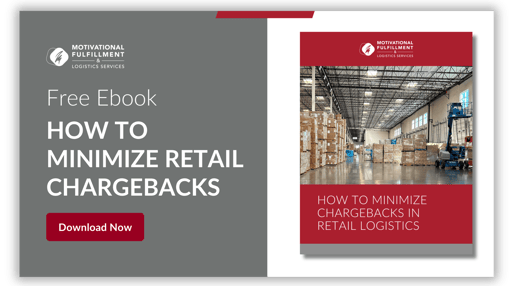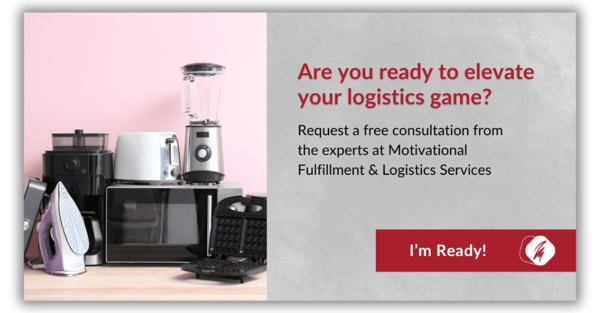Roadmap to Success: How the Right 3PL Elevates your Logistics Game
Customers today are looking for smart products that solve problems, simplify their lives, and keep them happier and healthier. What does that mean in practice? Users desire products that optimize their homes, inspire them, and empower them—whether it’s implementing a new smart home technology, picking up a cool new kitchen gadget, or finding a new home office solution.
But it’s not enough to have a great product that fits the bill. Great products that arrive damaged, late, or come with poor customer service can kill a product’s chances of success. So how do you get your product to consumers efficiently and in mint condition, in a cost-effective way for your business? It starts with setting up a custom-tailored logistics strategy. Below, we’ve outlined four key steps to include when mapping out this strategy.
Step 1: Where are your products coming from?
Where your products are coming from directly impacts various aspects of your supply chain, and thus is important when mapping out your logistics strategy. Are you manufacturing locally or are your products being imported?
For companies relying on international suppliers, tariffs are important to understand. By considering your manufacturing location when developing your logistics strategy, you can better anticipate tariff and import costs and factor them into your overall process. Tariffs are federally mandated and are based on your imports’ country of origin and product classification. Working with a third-party logistics partner that understands tariffs well will help you employ new tactics to minimize the impact new tariffs may have on your bottom line.
Step 2: Where are your products going?
Your product’s final destination will, of course, always be the consumer. But when it comes to where you need to get it, there’s a big difference between getting placed on retail shelves and shipping direct to customers (D2C fulfillment). Start your planning process by determining which option you need—including whether you need both.
Step 3: What are the unique challenges of getting your products to their final destinations?
Once you know where you’re shipping your products, familiarize yourself with the unique challenges you’ll encounter with each. There is no perfect solution—just the option that makes the most sense for you.
For instance, with retail fulfillment, you will need to be able to fulfill high-volume orders for big-box retailers or busy sales seasons. Retailers also often have complex compliance requirements, from routing instructions to data sharing, to labeling and scheduling.
For D2C fulfillment, each order needs to be processed and packed swiftly and securely to ensure efficient and damage-free arrival. Additional challenges include integrating your eCommerce or order management system, tracking delivery status, and providing seamless post-sale customer service.
Step 4: What unique needs do you have?
In our 46+ years in the logistics and fulfillment industry, we’ve found that no two clients are identical. One solution does not fit all. In this third step, think about the unique needs of your business and products. What value-added services do you need to be successful? Consider the following:
- Product re-flashing, refurbishing, and rework
- Parts replacement
- Quality control testing
- Kitting and assembly
- Display design and assembly
- Packaging and re-boxing
- Ticketing and labeling
- UPC and Tail code changes
The benefits of outsourcing fulfillment and logistics vs. using DIY logistics services
The above steps just scratch the surface of creating a comprehensive fulfillment and logistics plan, but it will help you lay the foundation and determine what will help your business and products find success.
While some businesses choose to use DIY logistics services, we firmly believe that outsourcing these operations to an experienced partner offers far more benefits than keeping it in-house. Here are some of the benefits partnering with a quality 3PL fulfillment company can bring:
- Cost savings: A quality 3PL will be able to negotiate favorable rates with carriers, utilizing existing warehouse infrastructure. This means you’ll save money on shipping and improve your bottom line.
- Expertise: Outsourcing logistics and fulfillment operations will allow you to focus on your business’ core competencies rather than developing logistics operations, which can be costly in both time and money.
- Scalability: The right 3PL will offer flexibility in terms of both storage solutions and access to highly trained employees. This will enable you to quickly adapt to market conditions, scaling up or down as needed.
- Efficiency: In-house logistics operations require you to train and maintain your own workforce, develop your own tracking technologies, and come up with processes to ensure accuracy. Working with an established 3PL fulfillment company gives you access to existing expertise and technology that enables higher efficiency and accuracy from the start.
- Less Risk: There’s a certain amount of liability that comes with managing inventory, warehousing, and transportation. With a 3PL fulfillment company, you transfer that liability rather than take it on yourself.
- Flexibility: Whether it’s a seasonal shift or a market change, working with a 3PL gives you greater flexibility and makes it easier to align your logistics and fulfillment needs with your business’s needs.
In conclusion, selecting and implementing the right fulfillment strategy is no small feat. Choosing between in-house fulfillment or working with a dependable 3PL is a big decision, and requires comprehensive understanding of your internal capabilities, market dynamics, and your customers’ expectations. A solid fulfillment strategy is essential not only for meeting current demands but also for accommodating future growth and maintaining a competitive edge in your industry.
If you’re considering working with a fulfillment partner (or switching to a new partner), we’d love to talk to you. Motivational is trusted by top housewares brands, has fantastic relationships with all major retailers, and is conveniently located near the LA/LB ports.


